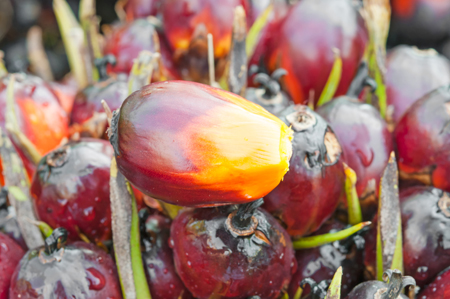 (Agrimoney) – Was Tuesday’s price boom in agricultural, and other, commodities just a one-off?
(Agrimoney) – Was Tuesday’s price boom in agricultural, and other, commodities just a one-off?
One ag, palm oil, on Thursday gave bulls some hope by, for April delivery, soaring 4.2% to 2,292 ringgit a tonne in Kuala Lumpur as of 09:30 UK time (03:30 Chicago time),
That had technical appeal, in taking the vegetable oil back above a clutch of moving averages, including the 50-day and 100-day lines, on the continuous chart.
However, the main factor in boosting prices was approval by the Indonesian parliamentary committee of plans by the country, the top palm oil producer and exporter, to ramp up its subsidy on biodiesel to 4,000 rupiah ($0.32) per litre, from 1,500 rupiah per litre.
Biodiesel plants are major consumers of vegetable oils, and with the Indonesian economy depending to a substantial extent on palm oil, but with prices having been undermined by decent supplies, including of rival soyoil, encouraging domestic use is seen as a way to help bolster the industry.
That said, the subsidy hike still requires further approval, from the parliamentary budget committee.
Soy read-through
Palm oil’s rise – helped by a reviving crude oil market, with Brent crude up 0.4% at $54.39 a barrel – boosted values of soyoil too, which soared 1.3% to 31.30 cents a pound in Chicago for March delivery.
That took the contract back over its 10-day moving average, and means it has rebounded some 6% from near-six-year lows reached a week ago on ideas of a surge in US biodiesel imports from Argentina, thanks to a proposed expansion of biofuel credit entitlement.
Soymeal remained somewhat in the doldrums, shedding 0.2% to $331.90 a short ton for March, helping limit gains in soybeans themselves for March to 0.4%, taking the contract to $9.75 ½ a bushel.
‘Aggressive selling’
A couple of other factors being watched in the soy market include South American weather, crucial now that the door is closing for weather events to have any real impact on the region’s output.
Terry Reilly, at Futures International, said that South America’s weather forecast had “improved with timely rains across the late developing soybean crops and second crop corn planted areas”.
CHS Hedging said that “rains forecast through February 10 for southern Brazil, Paraguay and Argentina… will ease dry weather which existed throughout parts of the region”.
And the pace of crop selling by farmers in both North and South America is attracting comment too.
Richard Feltes at RJ O’Brien flagged “ramped up farm sales” as a big reason behind the drop in prices in the last session, while Benson Quinn Commodities highlighted “aggressive” selling by South American producers both yesterday and on Tuesday.
“Look for price volatility to continue as record large crops and global supplies keep weaker trend and tone intact while short lived recovery bounces will be needed to entice new grain movement,” Kim Rugel at Benson Quinn Commodities added.
Data later
Another factor likely to influence prices later is the weekly US Department of Agriculture US export sales data, expected for soybeans to come in at 200,000-500,000 tonnes, down from the 888,209 tonnes last time.
Corn export sales, meanwhile, are seen holding firmer, at 800,000-1.0m tonnes, compared with 1.7m tonnes the previous week.
(The idea of firm US corn exports, and softening soybean shipments, ties in with a theme highlighted by Archer Daniels Midland earlier this week.)
And, indeed, corn futures for March showed gentle gains too, adding 0.3% to $3.84 ½ a bushel.
On the downside, it is notable that the contract in the last session returned to finding support at the 100-day moving average, at a little over $3.79 a bushel.
Dry weather caution
US export data have not been so kind for wheat.
And, indeed, investors were holding out little hope of surprises this time, even with the estimates for sales of 300,000-500,000 tonnes lagging the 544,392 tonnes seen the previous week.
Wheat futures for March were flat at $5.11 a bushel in Chicago.
That said, on the bullish side, the idea of dryness in the southern US Plains is gaining persistent attention, albeit at a time when, with seedlings dormant, moisture requirements are small.
RJ O’Brien’s Richard Felts said: “It is interesting to note the dry two-week outlook for the US hard red winter wheat belt, where three-month precipitation is tracking well below normal over the majority of the southern Plains.”
Still, hard red winter wheat itself for March shed 0.1% to $5.52 ½ a bushel in Kansas City.
Cotton eases
Where weekly US export sales data have proven consistently strong is in cotton.
Still, investors were not betting on the need for further price rises, after a recovery in the March contract of some 7% over the last couple of weeks, encouraged by covering by hedge funds of extensive short positioning.
Has that process gone far enough?
“Investors, heavily short until recently, may well have cleared a chunk of that position now,” said Tobin Gorey at Commonwealth Bank of Australia.
Cotton for March stood 0.8% lower at 60.77 cents a pound.




